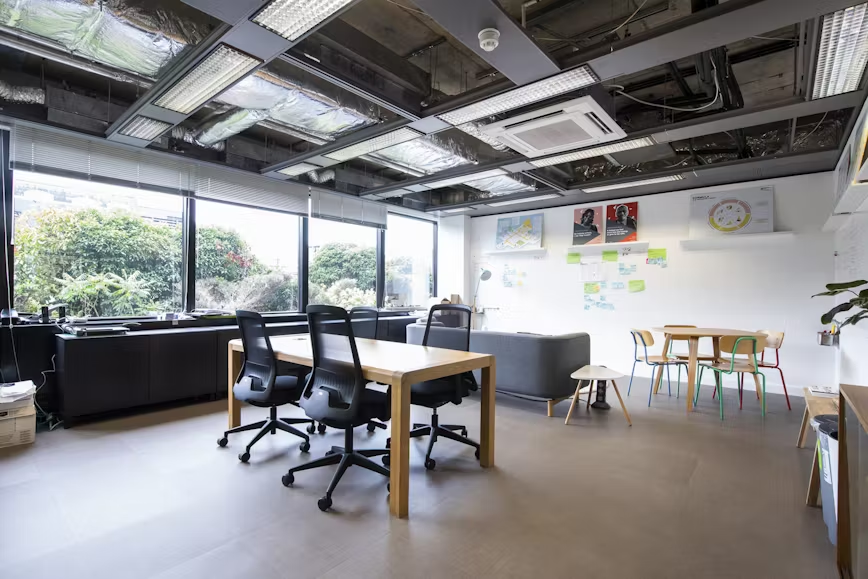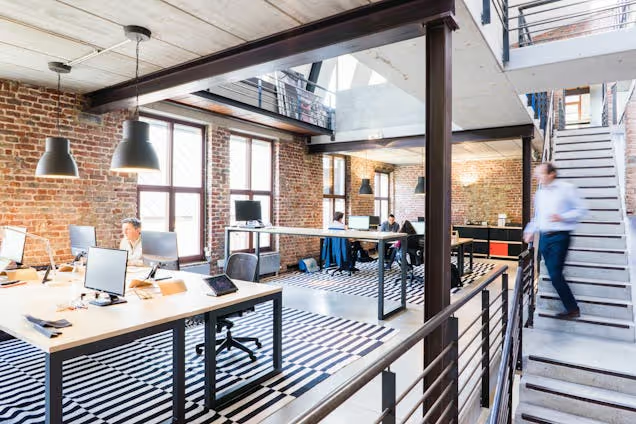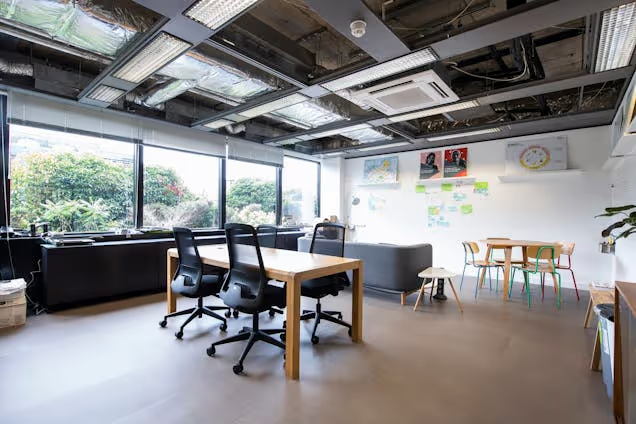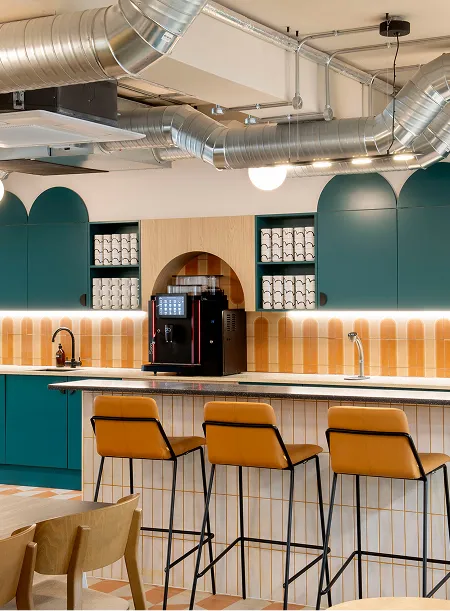The Benefits of Activity-Based Working

We all love to work in a comfortable space with a vibrant and relaxed atmosphere. Workplace design is super important for our vision of working here at Runway East!
That’s why we’ve created a list of the benefits that activity-based working can bring to a business!
Contents
What is activity-based working?
Where did activity-based working come from?
Activity-based vs open offices
What are the benefits of activity-based office spaces?
Find your activity-based workplace
What is activity-based working?

Activity-based working is a concept that has had a massive increase in attention since the rise of remote and hybrid work brought about by the pandemic.
Also shortened to ABW, activity-based working is a type of workplace design that provides a number of different types of spaces suited for employees doing different tasks.
This might include shared desks, private meeting rooms, informal sofa areas, breakout areas, phone booths, cubicles, and more. Pretty much everything that we have at Runway East!
Activity-based working is intended to maximise productivity and comfort. Flexibility in working styles is key to achieving this!
The types of workspaces for ABW might include:
- Individual workspaces, such as pods, nooks or private phone booths
- Shared desks and tables in open offices
- Collaborative spaces that include easily adjustable modular furniture
- Social and cafe areas with informal seating such as sofas, booths, and tables
- Technology-enabled conference rooms
- Meeting rooms where a few employees can huddle and collaborate
Where did activity-based working come from?
The term activity-based working was created by Erik Veldhoen, a Dutch consultant, in his book The Demise of the Office (1994).
It took inspiration from Robert Luchetti, an American architect who in the 1980s promoted the idea that different types of environment in the workplace should be suited to different activities.
In the late 1990s, Veldhoen redesigned the offices of the insurance company Interpolis for activity-based working, creating a range of different workspaces for employees.
Since then, many other companies have employed this fantastic design.
Activity-based vs open offices

Open offices are an enduring trend in office design - their popularity among designers means that it's pretty likely you've worked in an open office at some point.
A game-changing reaction against the cubicles of the past, open office designs break down walls to create huge, open spaces full of desks where everyone can see each other.
Activity-based office layouts are similar to open offices and often adopt open office designs.
The main difference is that offices for ABW will include many different types of private and semi-private space in addition to the open plan office space.
This is preferred by many workers because it means that they have access to privacy and quiet whenever they need it.
What are the benefits of activity-based office spaces?
Improved employee experience and engagement

When you incorporate activity-based working into your office design, people have the flexibility to work in the way that suits them.
This workplace design takes into account that all employees are different and work in different ways.
Giving people the freedom to choose how and when they work can make coming into the office a much better experience.
ABW builds space for people's needs, rather than squeezing people into economic spaces or compromising the functionality of the office.
A US survey found that 31% of respondents working in an open office had to retreat to a hallway or closet to make a call.
In activity-based office space designs, there are designated areas for calls, meaning that employees always have the space they need for both collaborative and solo work.
Increased productivity

The flexibility of activity based office space design means people can move between workstations for different purposes.
Got an important call to take? Sorted. Maybe you want to spend the afternoon bouncing ideas off coworkers. ABW works for that too!
With 29% of respondents in one US survey stating that working in open plan offices hinders their productivity because of distractions, ABW is a great way to ensure that employees can move to a different space to get things done at crucial times.
Use space more effectively, cutting costs

Another of the advantages of ABW is that it allows you to design your office layout more efficiently, creating a range of different spaces instead of assigning desks to each employee.
This can dramatically reduce your organisation's real estate needs and cut costs, which is on everyone’s minds after the chaos that the pandemic has brought to small and medium sized businesses!
A healthier lifestyle

A sedentary lifestyle has been found to be terrible for our health - sitting has even been called 'the new smoking'.
Sitting all day can increase your risk of heart disease, osteoporosis, depression, and a weakened immune system, among many other risks.
One of the benefits of activity-based working is that it encourages people to move around the office more frequently, switching between different workspaces.
It also makes it a lot easier to get out of your seat and go for a lunchtime walk or organising more standing meetings!
More creativity and collaboration

Activity-based environments are great for creativity and collaboration between employees.
Moving between different types of spaces makes talking to coworkers from different departments a lot easier, sparking conversations and ideas that would not usually come about.
ABW can include huddle rooms or informal seating areas ideal for brainstorming sessions.
You get the transparency of open plans and as well as the privacy that specific meeting spaces give you!
Better for introverts and extroverts

One of the top benefits of ABW is that it strikes a balance between extrovert-friendly open offices and introvert-preferred cubicles.
We know that introverts can be highly creative thinkers, yet research suggests that they struggle to get their work done in open offices.
On the flipside, extroverts fare much better in open plan offices where they can be surrounded by people.
This means that a collaborative environment designed with activity-based working in mind is an ideal solution for all types of personalities.
Find your activity-based workplace

If you're looking to implement activity-based design in your workplace, why not move to a coworking space like Runway East?
Designed with activity-based work in mind, our flexible coworking spaces have a mix of private offices, meeting rooms, phone booths, conference rooms, breakout areas, and cafe spaces.
As a member of our coworking spaces, you can enjoy working in a range of different areas each day, each suited to the activity you're doing.
Members get access to all our perks, discounts, social events, and being part of our ambitious and driven community.
Want to try before you buy? Book a viewing of one of our locations in London or Bristol today. Feel free to stay a while in one of our cafes!
Got Questions? We've Got Answers
We've put together some FAQs to help you settle into life at Runway East.
find your
perfect space
Discover flexible workspace solutions across London, Bristol, Bath, Brighton, and Birmingham. From private offices to enterprise suites, find a space that grows with your team and keeps them happy every day.
.webp)


.jpg)
.png)
.avif)